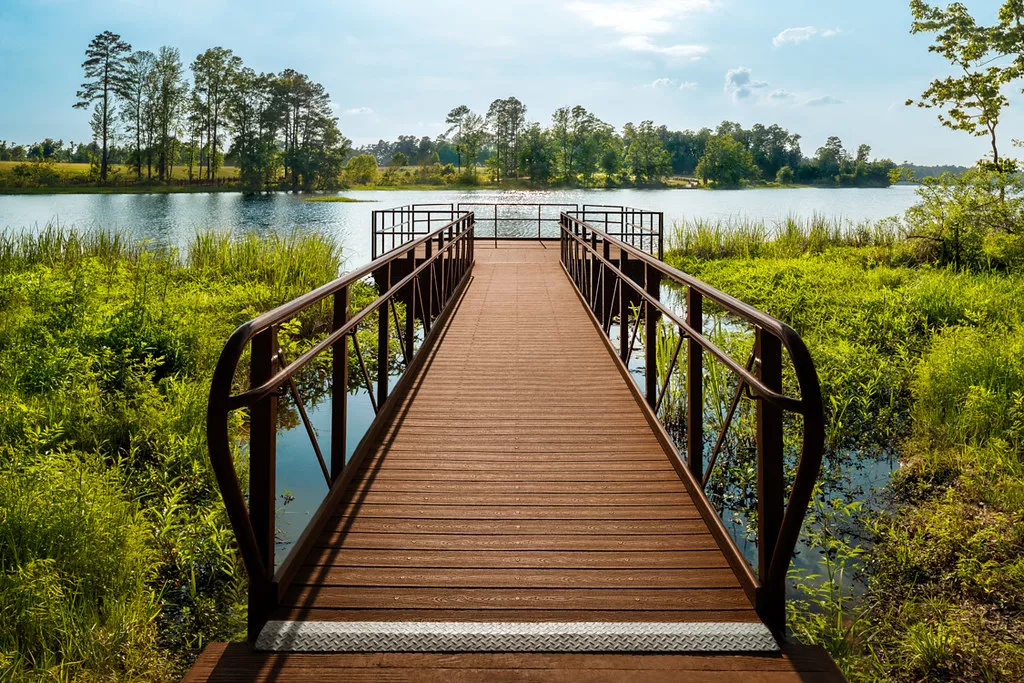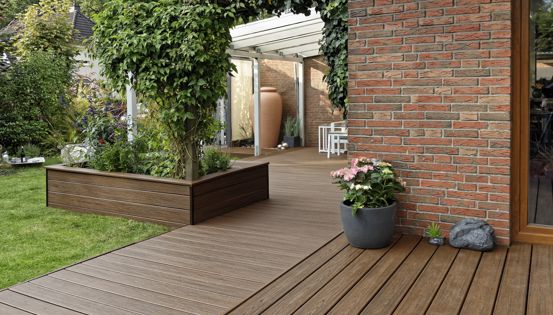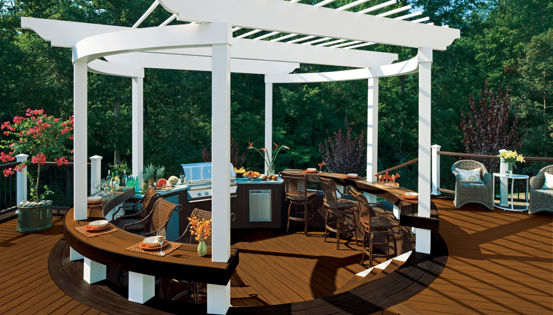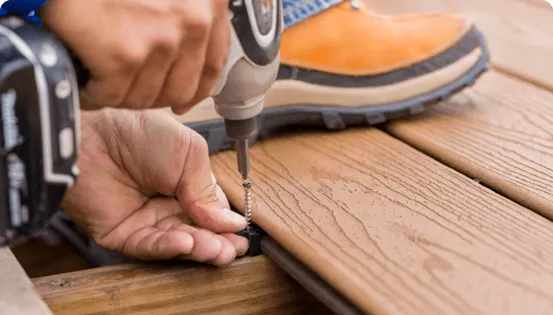What is Wet Rot?
Wet rot is decay that occurs in untreated wood that is routinely exposed to water or high moisture levels. The moist wood attracts a fungus that feeds on it and grows. Although most decks are built with pressure-treated lumber, they can still get wet rot. The most susceptible areas are where cuts in the lumber were not treated and where water pools or seeps into cracks.
The fungus spores can germinate when the wood’s moisture content exceeds 30 percent. If you don’t stop the fungus from growing, it might reach structural members, which could cause the deck to fail.
Wet Rot’s Early Signs
Catch wet rot early by inspecting for:
- A damp, musty smell
- Wood that is cracking and beginning to soften
- A board that moves (or bounces) when you walk over it
- Discolored or weak wood
- Visible fungal growth.
Wet Rot Pictures
Wet rot is fairly common. Maybe you’ve seen it and didn’t recognize it. These photos of wet rot show you what to look for.
Wet rot can be challenging to spot if the deck is painted. However, if you press a screwdriver into the wood, and it goes in easily, you have rot.
Wet Rot Causes
There are many sources of moisture in buildings that can lead to wet rot, including defective roofs and leaky plumbing. For decks, common sources include poor drainage that keeps the decking, railings, or posts wet; leaky gutters or downspouts; trapped ground moisture; and accumulation of leaves and tree litter on and around the deck.
Wet Rot Treatment
There are two steps to treating wet rot: stop the source of moisture and repair or replace the rotted wood. What it will cost depends on how severely the wood is rotted and how widely the rot has spread.
Can I Treat Wet Rot Myself?
Once you stop the source of the water causing the rot, you can likely treat and eliminate the rot yourself unless the damage is significant, such as severe deterioration of structural elements. With the source of moisture stopped, the next step is finding all the rotten wood. You may be surprised at the extent of the rot once you start digging into it, but don’t be shy about removing the decay. Only solid wood can be properly fastened and refinished.
This repair work might also serve as a reminder about prevention. When you build a deck, one of the best preventive steps is to apply waterproof butyl tape over joists, beams, rim joists, and ledger boards. It’s also good practice to regularly inspect the wood decks for rot. The sooner you catch it, the easier and cheaper it is to repair.
Cost of Wet Rot Treatment
Water damage doesn’t splinter wood like a fallen limb, but the repair costs are just as real. Water is a leading cause of damage in most structures, whether that’s a deck, shed, or house. Thankfully, decks are more accessible for repairs and water problems are easier to locate. As a result, most repairs are fairly simple and can be made at reasonable cost. Water damage can be your greatest cost, especially if you need to replace a roof or damage caused by a leaking pipe. The cost will be as individual as the situation.
Dry Rot vs Wet Rot: What’s the Difference?
While both wet and dry rot stem from too much moisture in the wood, dry rot is so named because moisture is often not evident. In fact, dry rot can take hold at a lower a moisture threshold (>20 percent) than wet rot. Plus, once dry rot starts, it draws moisture from the wood as it feeds on the cellulose. It requires no other source of moisture to spread. It’s why dry rot is considered to be the more severe form of fungal decay.
In short, both wet rot and dry rot can be destructive, but they differ in a few respects:
- Wet rot requires a higher moisture content than dry rot to take hold.
- Wet rot will stop growing if you remove the source of moisture.
- Dry rot does not need a steady source of moisture to spread because it grows using the moisture in the wood itself.
- Because dry rot is more likely to spread, it is also more likely to require professional help.
Need help treating wet or dry rot? Shop the supplies you need or find a contractor near you!







